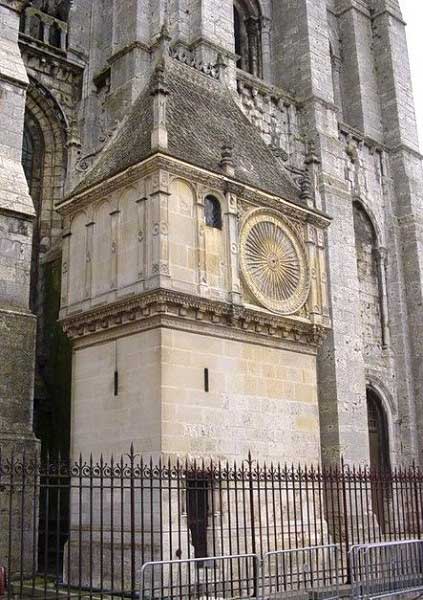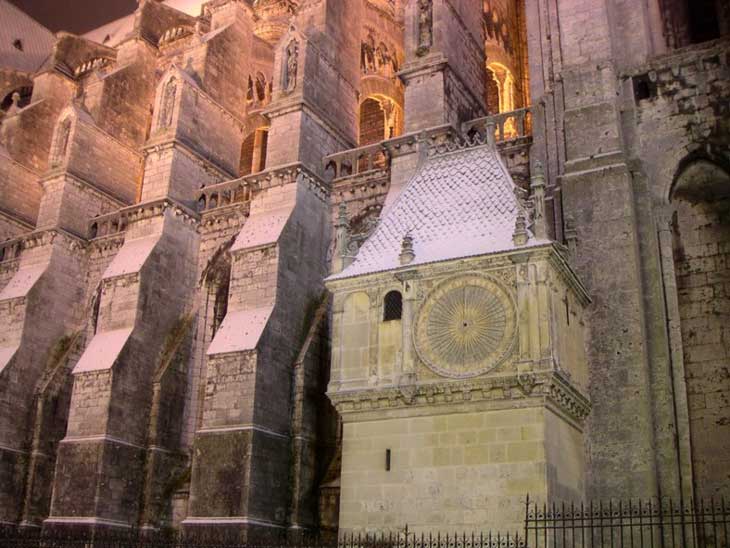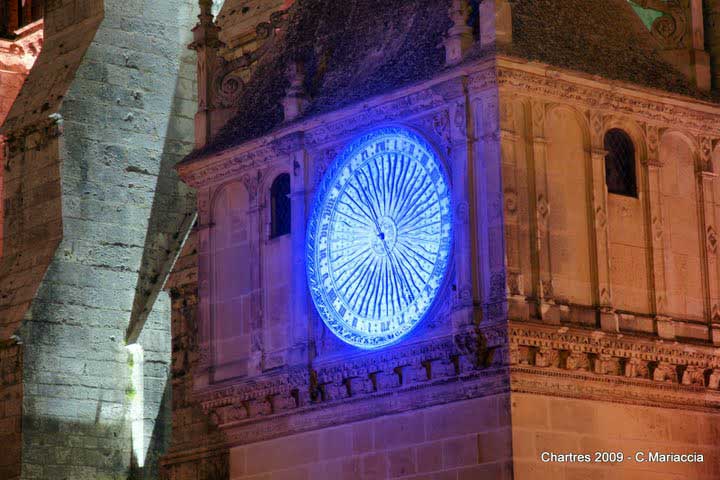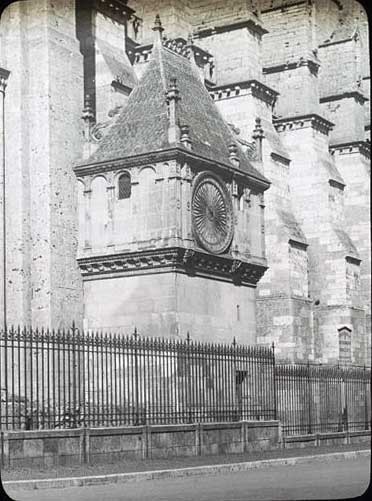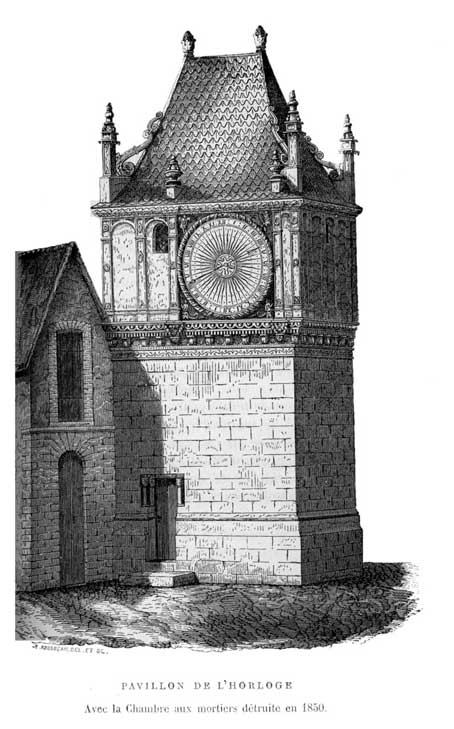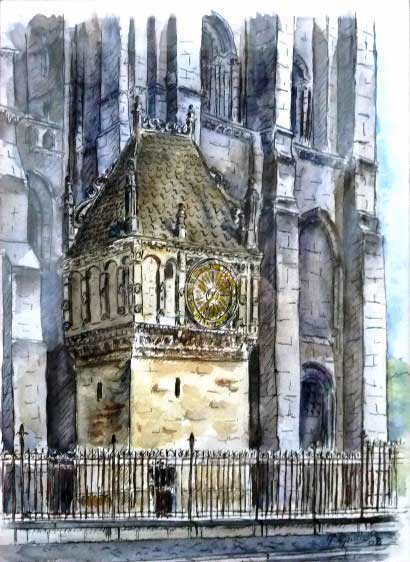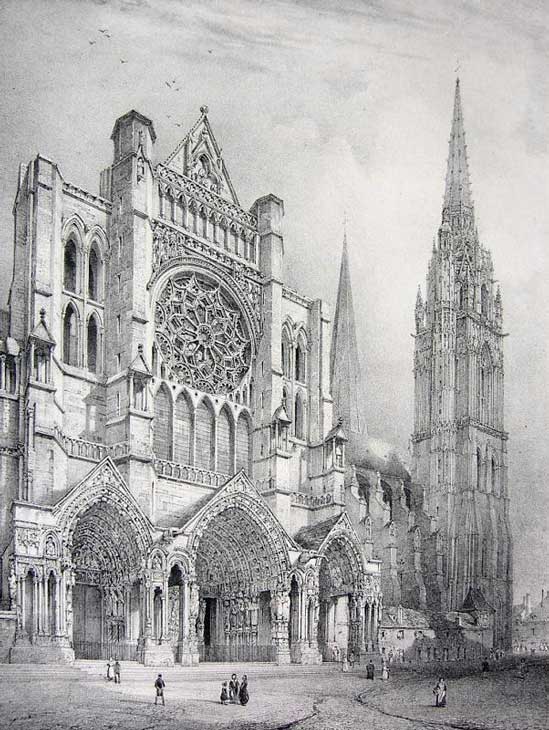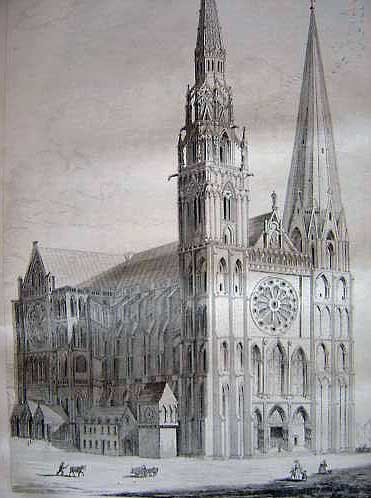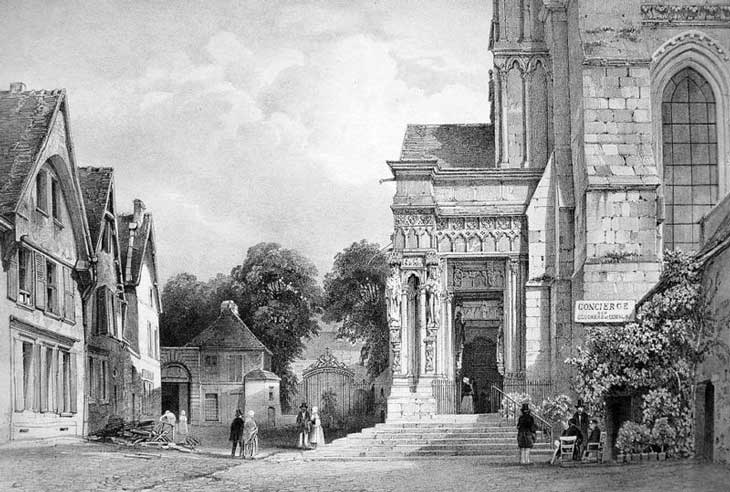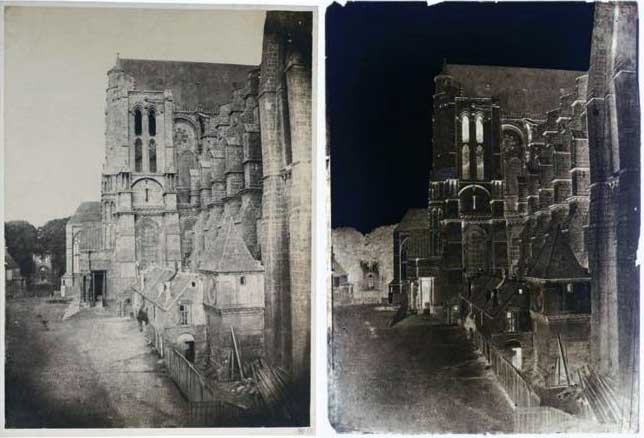This small Renaissance-style aedicula was built around 1520-21 by architect Jehan de Beauce to house a new clock mechanism. The first floor is earlier – probably 14th century.
In addition to the dial visible from the forecourt, the gearing system was linked by a surveyor’s chain to the gong at the top of the north spire – thus activating the hour chimes.
Back
